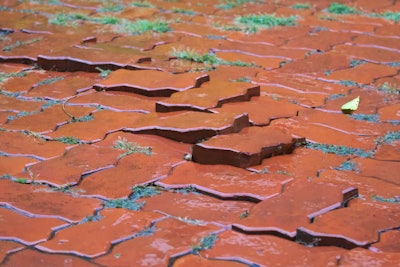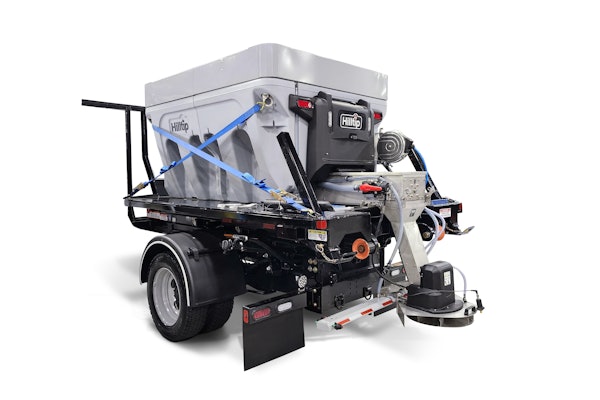
One of these threats is frost heave.
While frost heave is often thought of as a problem for shallow-rooted plants, it can also become a potential issue for your clients’ hardscaping if it was not installed properly.
What causes frost heave
Frost heave is when freezing temperatures reach the soil and cause subsurface water to form into ice. As it freezes, it expands, displacing soil and pushing upwards.
In order for frost heave to occur, there must be freezing temperatures, water and frost-susceptible soil. Fine-grain soil is the most susceptible to frost heave.
Frost heave is most common during late winter or early spring as the temperatures fluctuate. The changed depth of the frost creates a series of ice lenses with layers of frozen soil in between. As the ice lenses grow, the deformation and upward thrusting of the ground surface takes place.
This can cause joint sand under walkways to settle unevenly and can create dangerous and ugly bulges that are unsafe on your customer’s patio and/or walkway. Flagstone walkways are generally less affected by frost heave and typically only require the replacement of the damaged stone.
According to Carpenter & Costin, based in Ruthland, Vermont, the solution to frost heave varies. They suggest leaving it alone at first to see if the soil will settle back into place. If the pavers don’t settle back into the right spot, the base or surrounding area may need some work to improve the drainage.
With mild cases of frost heave, landscapers can remove pavers that have raised or settled, add or subtract some sand and reinstall the pavers. More severe cases are a sign it’s time for a full replacement.
A concrete base that is too thin or lacks proper drainage can easily crack from frost heave and usually requires a full replacement since the problem starts with the subgrade.
Proper installation
Hopefully, if your customer has experienced frost heave with their hardscaping, it wasn’t a project you installed. But if it is or if they’ve come to you for professional help to fix someone else’s mess, here are the ways to properly install a base that helps minimize the chance of frost heave ruining their walkways again.
By eliminating one or all of the conditions needed for frost heave, you can help mitigate this type of damage. Reducing frost penetration, keeping water out of the freezing zone, or making sure soil in the freezing zone is not susceptible to frost are all options.
The first thing to evaluate is the soil type and drainage you are working with. Soil types that hold more water or soil that has poor drainage or sits near an underground spring are more likely to experience frost heaving. If the soil has clay-like conditions, the base must be dug deeper.
It is important to dig below the historic frost line and address any drainage problems when working on the base. Making sure a base is properly graded and compacted to the International Concrete Paving Institute’s (ICPI) standards can ensure you don’t have call backs in the future.
Also, when using edging to hold pavers in place, avoid using plastic, as this can also heave in cold weather.
If you are building a hardscape out of fieldstone, opt for large pieces as these will stay in place better. Smaller stones can be easily undermined by the freeze/thaw cycle.










